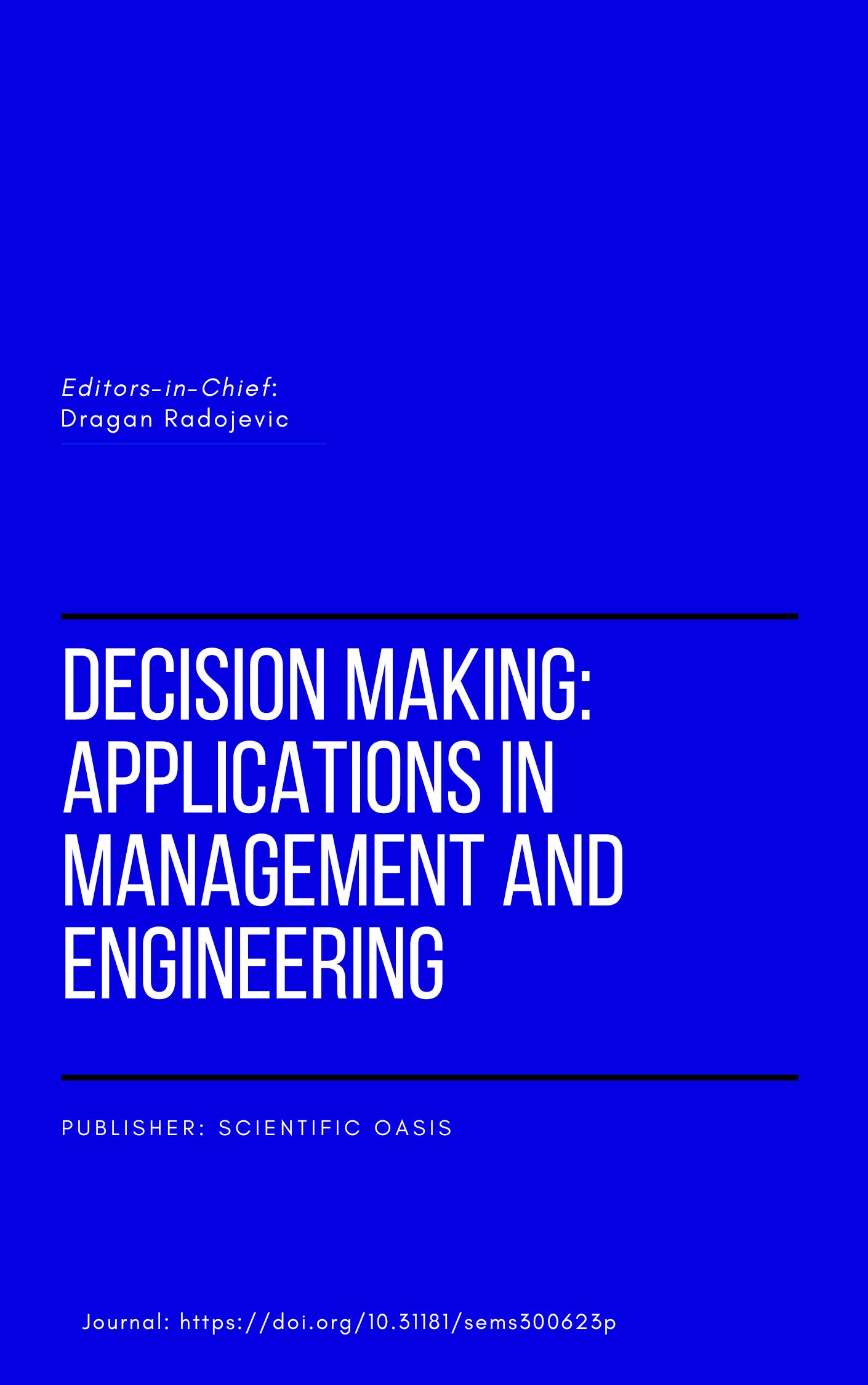Higher Education and Regional Economic Coordination: Measurement and Evaluation, Influencing Factors, and Development Decisions
DOI:
https://doi.org/10.31181/dmame8120251332Keywords:
Higher Education, Regional Economy, Coupling Coordinate Development, Influencing FactorsAbstract
Higher education relies on the support of the regional economy, while the demand for human capital to drive regional economic growth largely originates from higher education. Thus, their coordinated advancement is essential in the contemporary knowledge-based economy. This study establishes an indicator system and evaluates the current state of higher education and regional economic development. Utilising statistical data from Shaanxi Province spanning 2008 to 2022, the entropy method is applied to determine indicator weights. Decision analysis on the coordination level and influencing factors of higher education and regional economic development is conducted through statistical methods, including multiple linear regression, the coupling coordination model, and the obstacle degree model. Findings indicate a gradual strengthening in the coupling coordination degree, progressing from an initial phase of moderate imbalance to primary coordination. However, the overall coordination level remains low, highlighting the need for further integration. The limited developmental progress of both sectors acts as an internal constraint on their coordination. The three primary indicators impeding higher education advancement are the per-student public financial budget allocation for regular universities, the proportion of senior academics within full-time faculty, and the enrolment ratio of postgraduate students in regular universities. Additionally, enrolment figures frequently emerge as limiting factors. Regarding regional economic constraints, factors such as social retail sales, GDP index, and the proportion of employees in the tertiary sector hinder progress. Meanwhile, urbanisation functions as a significant catalyst, primarily enhancing coordination through its positive effect on developmental levels. Based on these findings, the study puts forward policy recommendations to foster deeper integration and coordination between higher education and regional economic development.
Downloads
References
[1] Bertoletti, A., Berbegal-Mirabent, J., & Agasisti, T. (2022). Higher education systems and regional economic development in Europe: A combined approach using econometric and machine learning methods. Socio-Economic Planning Sciences, 82, 101231-101231. https://doi.org/10.1016/j.seps.2022.101231
[2] Johansen, T., & Arano, K. (2016). The Long-Run Economic Impact of an Institution of Higher Education: Estimating the Human Capital Contribution. Economic Development Quarterly, 30(3), 203-214. https://doi.org/10.1177/0891242416655204
[3] Agasisti, T., Egorov, A., Zinchenko, D., & Leshukov, O. (2021). Efficiency of regional higher education systems and regional economic short-run growth: empirical evidence from Russia. Industry and Innovation, 28(4), 507-534. https://doi.org/10.1080/13662716.2020.1738914
[4] Canal Domínguez, J. F. (2021). Higher education, regional growth and cohesion: insights from the Spanish case. Regional Studies, 55(8), 1403-1416. https://doi.org/10.1080/00343404.2021.1901870
[5] Machi, I. O., Okechukwu, N. M., Okafor, V. C., & Collins, N. K. (2023). Higher Education and Africa's Economic Development: Challenges for the Nigerian Economy. Asian Journal of Economics, Business and Accounting, 23(20), 103-112. https://doi.org/10.9734/ajeba/2023/v23i201096
[6] Osmani, F., & Jusufi, G. (2022). The Contribution of Higher Education To Economic Growth of Western Balkans: Evidence From Kosovo, Albania, North Macedonia, and Montenegro. InterEULawEast, 9(1), 85-106. https://doi.org/10.22598/iele.2022.9.1.4
[7] Yan, S. X., Yu, Z. L., Nan, S. J. & Wang, M. N. (2024). Coupling and Coordination Measurement of Higher Education, Scientific and Technological Innovation and Economic Growth: A Case Study of Nine Provinces in the Yellow River Basin. Statistics & Decision, 40(22), 81-86. https://doi.org/10.13546/j.cnki.tjyjc.2024.22.014
[8] Han, W. Q., Sun, Z. R., & Zhao, B. (2020). A study on the coordination between higher education and regional economy in Beijing-Tianjin-Hebei region based on canonical correlation analysis. Tianjin Science and Technology, 47(2), 5-8+11. https://doi.org/10.3969/j.issn.1006-8945.2020.02.002
[9] Yan, H. Q., & Wu. F. (2020). Research on the coordinated development of higher education and regional economy in Quanzhou under the "Maritime Silk Road" Strategy-Discussing the Training of Talent in Marine Economy. Statistics and Management, 35(3), 57-61. https://d.wanfangdata.com.cn/periodical/tjygl202003011
[10] Zhao, W. X. (2022). A Comparative Study on the Contribution Rate of Higher Education to Regional Economic Growth. Heilongjiang Researches on Higher Education, 40(11), 1-7. https://doi.org/10.3969/j.issn.1003-2614.2022.11.001
[11] Zhao, Z. (2021). Optimization Analysis of Higher Education Based on the Theory of Regional Economic Balanced Development. Economic Research Guide, 35, 27-29. https://doi.org/10.3969/j.issn.1673-291X.2021.35.009
[12] Zhou, L. (2024). Higher education promoting regional coordinated development: influencing mechanisms and empirical evidence. University Education Science, 2, 77-87. https://doi.org/10.3969/j.issn.1672-0717.2024.02.09
[13] Zhou G. Y., & Luo, S. M. (2018). Higher Education Input, Technological Innovation, and Economic Growth in China. Sustainability, 10(8), 2615. https://doi.org/10.3390/su10082615
[14] Liu, Z. Y., & Ma, J. F. (2023). The Impact of Regional Higher Education Resource Allocation on High-Quality Economic Development Under the Trend of Population Mobility. Educational Research, 44(12), 106–120. https://d.wanfangdata.com.cn/periodical/Ch9QZXJpb2RpY2FsQ0hJTmV3UzIwMjUwMTE2MTYzNjE0Eg1qeXlqMjAyMzEyMDExGghrNnlrMmY2bA%3D%3D
[15] Geng, Y. Q., Chen, L. Y., Li, J. Y., & Iqbal, K. (2023). Higher education and digital Economy: Analysis of their coupling coordination with the Yangtze River economic Belt in China as the example. Ecological Indicators, 154, 110510. https://doi.org/10.1016/j.ecolind.2023.110510
[16] Yang, J, & Chen, H. D. (2023). Coupling Coordination between University Scientific & Technological Innovation and Sustainable Economic Development in China. Sustainability, 15(3), 2494. https://doi.org/10.3390/su15032494
[17] Tang, W. Z. (2015). Theoretical and Empirical Research on the Role of Higher Vocational Education in Promoting Economic Development in China. Southeast Academic Research, 4, 226-231. https://d.wanfangdata.com.cn/periodical/dnxs201504031
[18] Jones, C. I., & Romer, P. M. (2010). The new Kaldor facts: ideas, institutions, population, and human capital. American Economic Journal: Macroeconomics, 2(1), 224-245. https://doi.org/10.1257/mac.2.1.224
[19] Wu, N., & Liu, Z. K. (2021). Higher education development, technological innovation and industrial structure upgrade. Technological Forecasting and Social Change, 162, 120400. https://doi.org/10.1016/j.techfore.2020.120400
[20] Jiang, L., Li, Y. Q., & Dong, W. C. (2018). Research on the Interaction and Covariation Between My Country's Higher Education Structure and Industrial Structure: Based on the Perspective of System Coupling Relationship. Educational Science, 34(3), 59–66. https://doi.org/10.3969/j.issn.1002-8064.2018.03.009
Downloads
Published
How to Cite
Issue
Section
License
Copyright (c) 2025 Decision Making: Applications in Management and Engineering

This work is licensed under a Creative Commons Attribution 4.0 International License.












